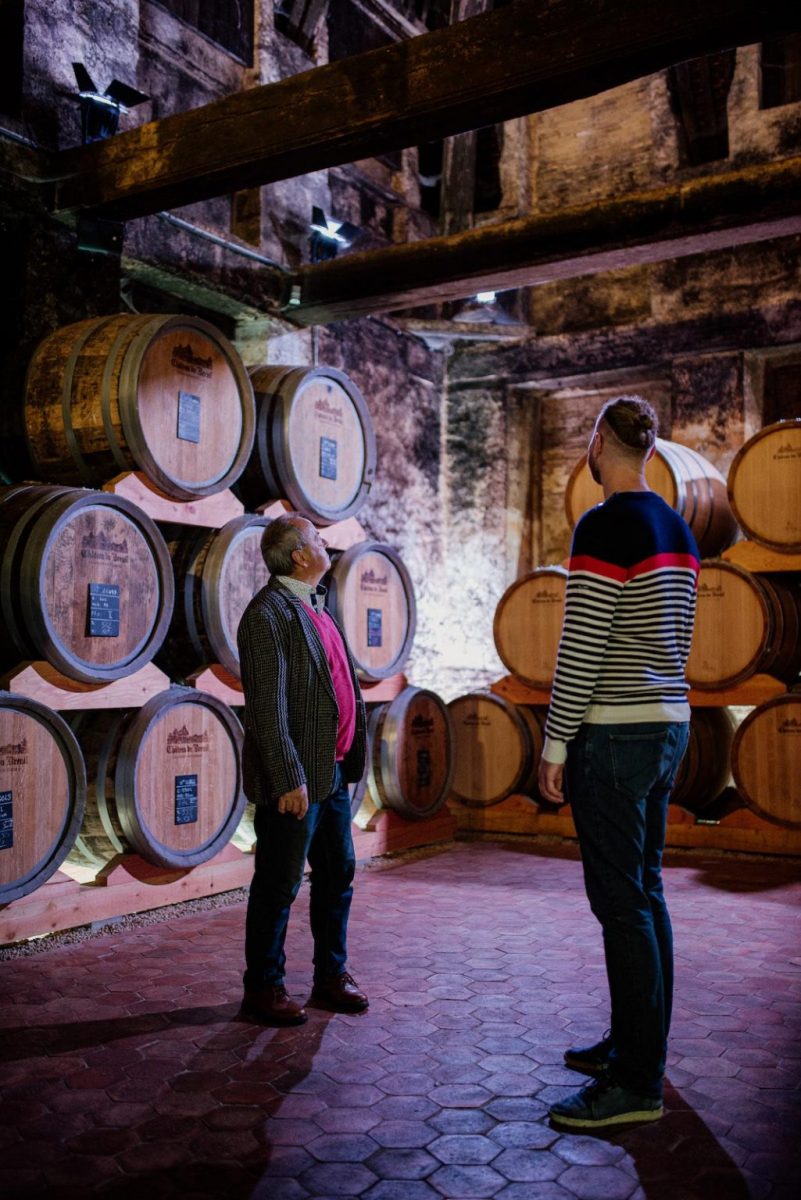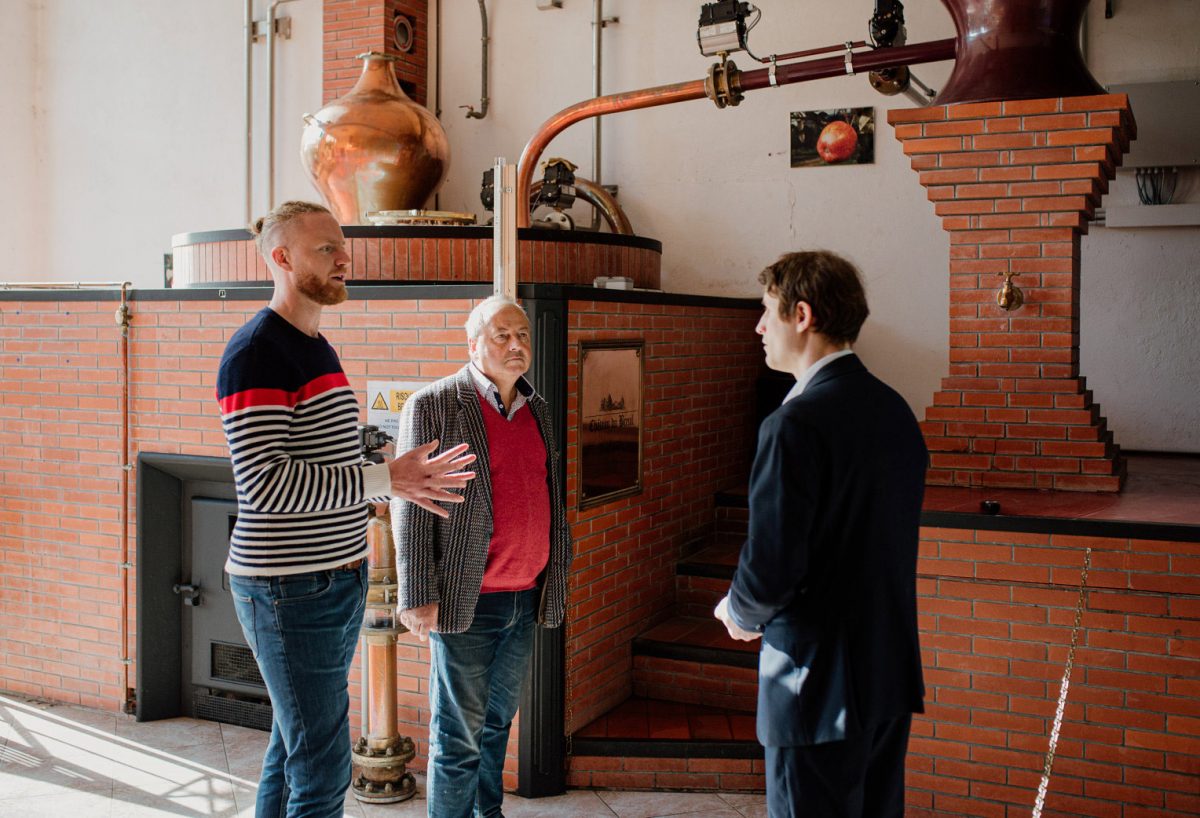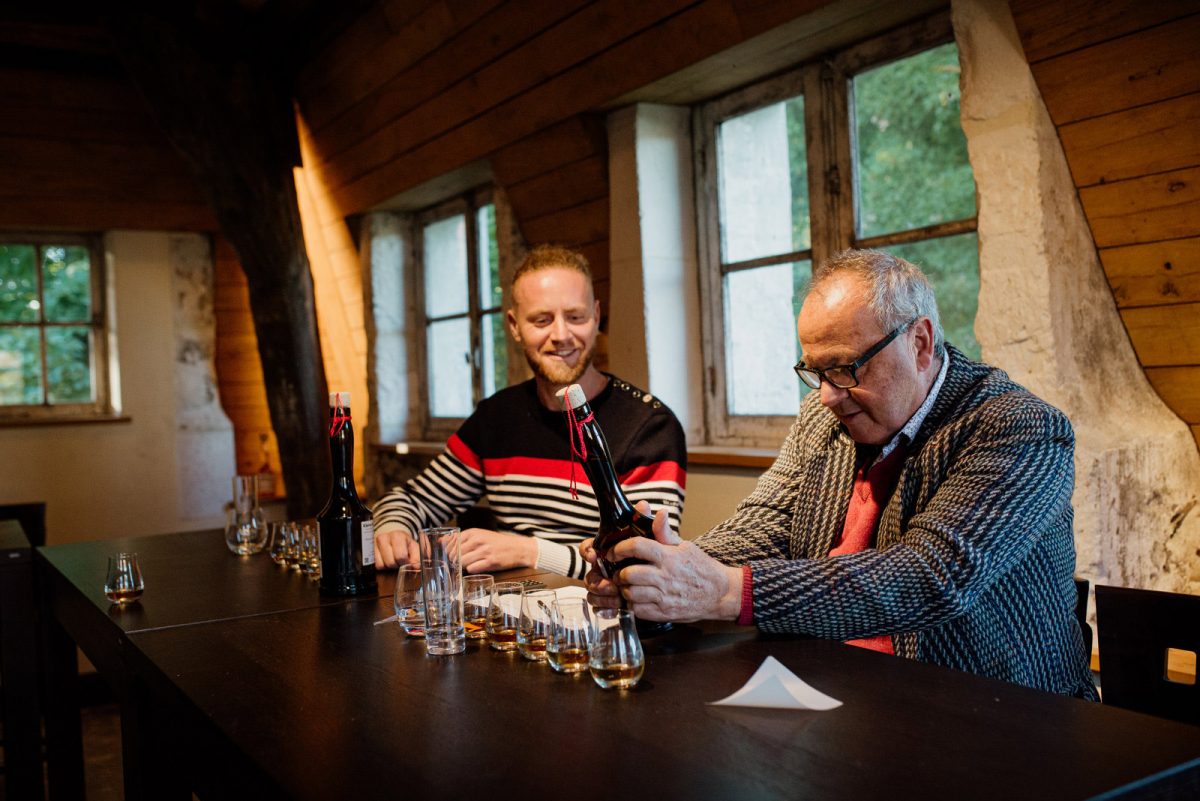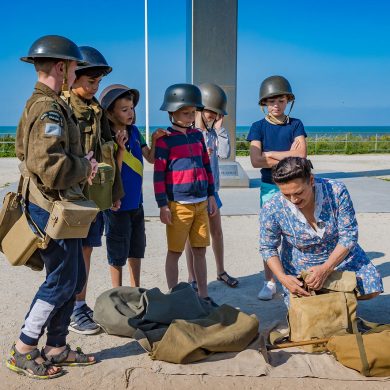Updated on 17 January 2024
Reading time: 5 minutes
John and I decided to get into the spirit of things by learning to make our own Calvados in Normandy! To understand the ins and outs of Calvados-making, we take our novice palates and scarce knowledge to the iconic Château du Breuil in the heart of the Pays d’Auge to sign up for a tour and blending workshop!
Apples galore!
Upon arrival, we are greeted by a professional guide by the name of Antoine, and follow him inside the revamped boutique of the Château du Breuil. This was our perfect opportunity to be introduced to a range of products stamped “Château du Breuil”: not only their world-famous Calvados, but, surprisingly, gin, rum and even whisky. We are intrigued but keep our questions for later…
As we tour the domain, Antoine gives us a deep insight into the history of the place which has served many purposes over several centuries. It was once a linen spinning mill, then a cheese factory, a chocolate factory, a cider factory and, eventually, became a distillery in 1954. As we walk around, we notice gigantic piles of freshly harvested apples. Volumes are impressive! To produce their quintessential Norman eau-de-vie, an amazing 22,000 apple trees are needed. Here in the Pays d’Auge region of Normandy, the orchards of the lush, pastoral hills surrounding the Chateau du Breuil produce and deliver the quality apples which will be processed on site.



Double distillation and a lot of patience
Our tour leads us to the stills. Here, the cellar master and his team carry out a double distillation process, which plays a crucial role in the character of Calvados. The more times a spirit is distilled, the lighter and purer the final product. After learning about all aspects of distillation, we head to their orangery and cellar. Once a symbol of prestige and wealth, the orangery is sheltered in one of the wings of the château. As we walk by, its unusual architecture reminiscent of an overturned boat captures our attention. This space provides perfect conditions for Calvados to mature: oak barrels and a constant temperature which, working together, provide the chemistry exchange of wood and spirit to release all the aromas of the finished Calvados.
Become a master blender!
We move on to the first floor of the orangery where things are about to get serious. Tasting glasses are spread out on a table, lined up by Antoine who pours five different Calvados, aged from 2 to 15 years, for us to sample. The beverages are left to sit for a few minutes in order to “open up” in the glasses before being nosed and tasted.

The tasting session begins in a solemn silence. Calvados is served in glasses which have a bulbous bottom ideal for swirling. They are also narrow at the tops to concentrate aromas. He gives us a few minutes to hold the individual glasses up to the light and observe the colour. Calvados can range from pale straw to vibrant amber or deep, nutty brown. Usually, the darker the colour, the more concentrated the flavour.
We start with a young Calvados of 2 years old characterized by freshness, tonicity and vigour. Power, richness and voluptuousness are reflected in the flavours of its older version: the 15-year-old Calvados. We are taught how to smell the beverages gently, in a “dip-in, dip-out” movement and to savor all the unexpected aromas: apple, almond, vanilla, wood and smoky notes.. Surprising flavors which linger on our palates and taste buds identify hints of cocoa, liquorice and quince, creating a supple flavor and pleasant mouth feel.

After this great sensory experience, it’s finally time to create our own spirit ! For his blend, John decides to bring together the 2-year-old Calvados and the 15-year-old one to see how they might unlock different aromas and flavors. On my side, I try a mix of 3 different Calvados in order to find a balance of nuances between the 2-, 4- and 15-year-old spirits. No experience is required for this drinker’s favourite: just an open mind and a determination to engage all of the senses.
Bottling is the last step of the process. Once the cork is inserted in the bottle, we are in charge of sealing it with a wire and a red wax coating. We struggle a little with the twisting hand movement involved, but the result is satisfying. The last task of this educational and hands-on experience is to label the bottle with our first and last names. We are rewarded by a diploma of “Master Blender” handed out by Antoine. We are now ready to impress our friends by dropping some serious knowledge after learning the tricks of the trade!
Drinking too much can harm your health
The Chateau du Breuil
Welcome to the heart of the Pays d’Auge, in a Norman property teeming with history. This listed building was built in the 16th century and is now considered as one of the most prestigious Calvados distilleries of Normandy.
USEFUL INFORMATION
Visit & Workshop « Création Calvados »
By reservation only
Château du Breuil – La Spiriterie Française
14130 Le Breuil-en-Auge
+33 (0)2 31 65 60 00
[email protected]
www.chateau-breuil.com
2024 DATES
Open all year round. Reservation on request
2024 PRICES
€150 per person
The price includes a two-hour workshop and the visit of the chateau du Breuil
You bring back your own spirit
By reservation only, by email or by phone
Open to anyone with a disability
All of the above information is subject to change.



